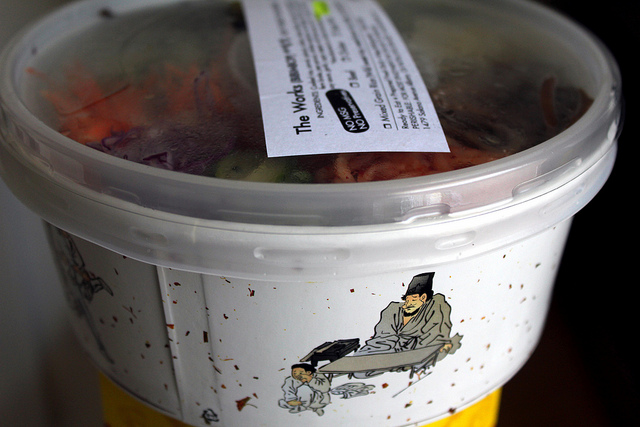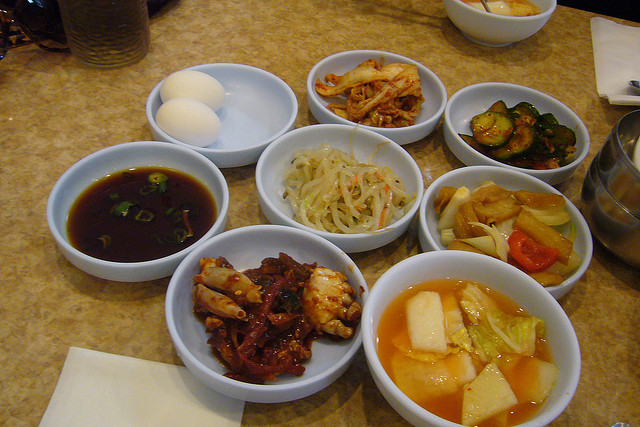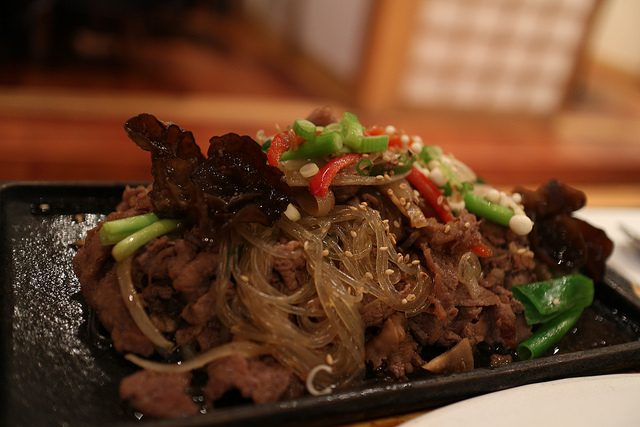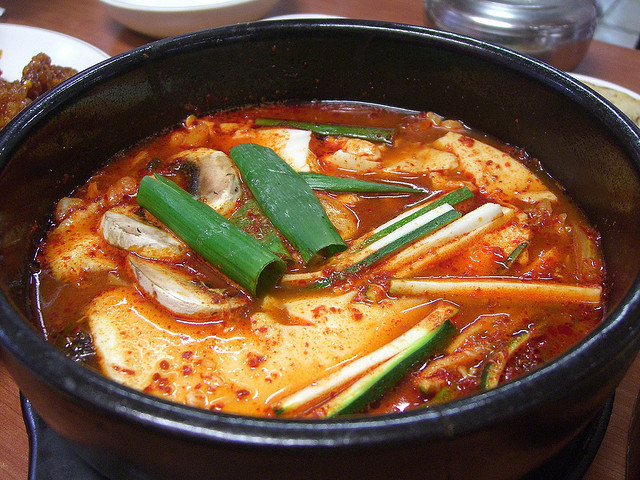Korean Food 101: An Underappreciated Food Delivery Option
Why are so many offices stuck in a pizza-and-Chinese-takeout rut? Partly because those two cuisines are delicious, but partly because they’re familiar crowd-pleasers: chances are, even the least adventurous eater in the office grew up eating pizza and Chinese food. And while it can be awkward to ask your coworker who always orders plain cheese pizza or sweet and sour chicken to try something new, it can also be incredibly rewarding.

Image source: Flickr user Quinn Dombrowski
For companies that believe sharing meals can bolster teamwork and morale in the workplace, there’s something really special about gathering your coworkers around the lunch table to try a new cuisine together. Korean food is the perfect example. It’s at least vaguely familiar (mostly thanks to the now-ubiquitous Korean taco trucks in many cities), but since most of us didn’t grow up eating the cuisine, Korean dishes can lend an adventurous vibe to an otherwise typical workday lunch shared with colleagues.
Best of all, Korean food offers a wide range of options for all kinds of diners: there are flavorful, but straightforward beef dishes that are great for pickier eaters, along with spicier and fermented foods for those who want to embrace the full experience of Korean cuisine. With both needs in mind, here’s our beginners’ guide to Korean takeout and food delivery:

Image source: Flickr user Kent Wang
Banchan
When you visit a Korean restaurant, the first thing you’ll eat will likely be banchan: a spread of complimentary appetizers that will simply show up at your table. The individual dishes will be different depending on the restaurant, but frequent players include namul (vegetables) like bean sprouts, spinach, and radishes, often stir-fried with garlic and chiles, kimchi (more on that below), and jeon, little savory pancakes made with assorted meats or vegetables, eggs, and rice flour. Even when you order food delivery from a Korean restaurant instead of dining in, you may find some banchan included in your takeout bag.

Image source: Flickr user Craig Nagy
Kimchi
Kimchi is perhaps the most famous Korean dish, and is included with most meals; it’s used as a side dish and as a condiment mixed in with entrées. Imagine fermented pickles, if you can, but made with cabbage and spices instead of cucumbers. Kimchi can be made very fiery or quite mild, but in most cases it will be a little sour, a little hot, and a little pungent — although there are more than 100 variations of kimchi available, so you’ll learn to taste a little bit before adding it into your meal.
Gochujang
Another condiment and almost as ubiquitous in Korean food as kimchi, gochujang is a spicy sauce made from fermented red chiles. Adventurous eaters will love gochujang, but those who don’t like spicy foods should request dishes with only a small amount.
Bibimbap
Bibimbap may be the perfect choice for a Korean lunch. It literally means “mixed rice”, and is a bowl of white rice stir-fried with assorted ingredients, like vegetables, sliced meat, and occasionally an egg. The dish is served with its components piled together in a bowl, and then you add your desired amount of sauce and mix everything together. Bibimbap is easy to order with ingredients you like (beef, pork, chicken) and usually served with gochujang on the side, so it’s a little more amenable to diners who want to control the spiciness of their food, and probably the best dish for picky eaters to try.

Image source: Flickr user Elsie Hui
Bulgogi
Bulgogi means “grilled meat” (commonly referred to as Korean barbecue) and is most famously made with beef — although it can also be pork, chicken, or other meats. Bulgogi generally consists of thinly sliced meat marinated in ginger, sugar, soy sauce, and other spices, then grilled. Tender, juicy, and packed full of flavor without being too fiery, bulgogi is an excellent dish for meat lovers and usually served with a bowl of rice and some vegetables. Another delicious variation is galbi, marinated and grilled boneless short ribs.

Image source: Flickr user Alpha
Jjigae
Light, spicy stews called jjigae are another staple of Korean restaurants, and come in many variations. Some of the most popular are the self-explanatory kimchi jjigae, sundubu jjigae (made with tofu), and doenjang jjigae (made with doenjang, a popular condiment made from soybean paste, and usually combined with vegetables and tofu).
While there are dozens of Korean dishes to explore, these are the most popular (and some of the most approachable) meals to add to your next food delivery order. When you’re ready to begin your exploration of Korean cuisine, you’ll find plenty of menus and easy online ordering available at Waiter.com!